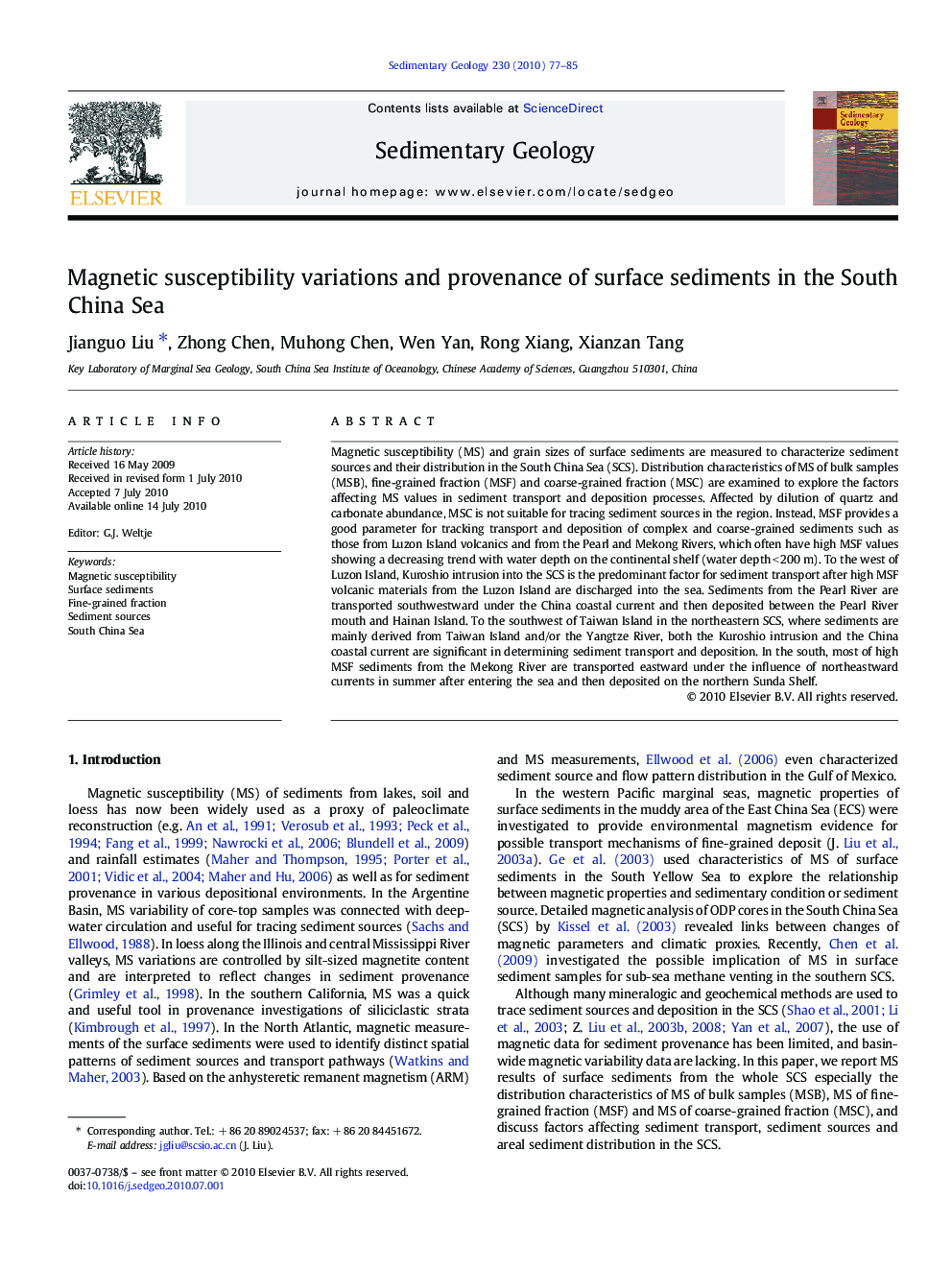| Article ID | Journal | Published Year | Pages | File Type |
|---|---|---|---|---|
| 4690146 | Sedimentary Geology | 2010 | 9 Pages |
Abstract
Magnetic susceptibility (MS) and grain sizes of surface sediments are measured to characterize sediment sources and their distribution in the South China Sea (SCS). Distribution characteristics of MS of bulk samples (MSB), fine-grained fraction (MSF) and coarse-grained fraction (MSC) are examined to explore the factors affecting MS values in sediment transport and deposition processes. Affected by dilution of quartz and carbonate abundance, MSC is not suitable for tracing sediment sources in the region. Instead, MSF provides a good parameter for tracking transport and deposition of complex and coarse-grained sediments such as those from Luzon Island volcanics and from the Pearl and Mekong Rivers, which often have high MSF values showing a decreasing trend with water depth on the continental shelf (water depth < 200 m). To the west of Luzon Island, Kuroshio intrusion into the SCS is the predominant factor for sediment transport after high MSF volcanic materials from the Luzon Island are discharged into the sea. Sediments from the Pearl River are transported southwestward under the China coastal current and then deposited between the Pearl River mouth and Hainan Island. To the southwest of Taiwan Island in the northeastern SCS, where sediments are mainly derived from Taiwan Island and/or the Yangtze River, both the Kuroshio intrusion and the China coastal current are significant in determining sediment transport and deposition. In the south, most of high MSF sediments from the Mekong River are transported eastward under the influence of northeastward currents in summer after entering the sea and then deposited on the northern Sunda Shelf.
Related Topics
Physical Sciences and Engineering
Earth and Planetary Sciences
Earth-Surface Processes
Authors
Jianguo Liu, Zhong Chen, Muhong Chen, Wen Yan, Rong Xiang, Xianzan Tang,
